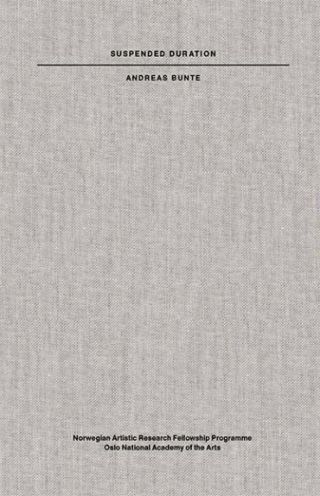Desire in Representation
availability unknown, if interested please write an email
Desire in Representation, an artist’s book in two parts, conceived by Peggy Buth (researcher Fine Art, 2004-2005) is the result of a comprehensive documentation and research project, which began at the Royal Museum for Central Africa, founded in Tervuren (near Brussels) in 1907.
Desire in Representation, an artist’s book in two parts, conceived by Peggy Buth (researcher Fine Art, 2004-2005) is the result of a comprehensive documentation and research project, which began at the Royal Museum for Central Africa, founded in Tervuren (near Brussels) in 1907. It combines documentary photo material of the museal representation of Central Africa and its colonisation with a narrative created by quotations of travelogues and adventure stories, archival images and historic documents from the colonial days of Belgium and Germany. The publication focuses on the colonisers’ desires, expectations and aspirations and the way in which these find expression in their self-portrayals and in the images of the ‘other’. An appendix lists the sources used and provides further references through additional information and image material.
Between 2004 and 2007, Buth used photography and film to document the permanent exhibition of the Africa Museum and the transformation of its rooms for the special exhibit Memory of Congo. The Colonial Era (Feb.-Oct. 2005). The first part of the book, Travelling through the Musée Royale, shows room views, individual exhibits and details of various displays chosen from this fund of documentation. Buth’s photographs foreground areas of transition and reconstruction, the gaps and correctional traces which reveal the layers of time and the palimpsest vestiges of different exhibition concepts. The sequence of images concludes with a look at the museum archive and the library and thus leads to the subject of the book’s second part.
The book O, my Kalulu!, suggestive of a more intimate form of reading, traces the story of an African boy who appears in the travelogues of Henry Morton Stanley, the Africa explorer and publicist. Stanley, who had first travelled to Central Africa on assignment by the New York Herald in 1871, became a key figure in the colonisation of the Congo under the Belgian King Leopold II.
Stanley’s travelogues and historic documents disclose that the boy named Kalulu was ‘given’ to him as a slave and accompanied him as a personal attendant on his African expeditions and trips to Europe.
Kalulu drowned while trying to cross the Congo River in 1877. In Stanley’s novella, My Kalulu, Prince, King and Slave, published in 1873, the boy is ‘ennobled’ to an African prince, who then becomes the blood brother of an Arabian slave trader’s son whom he follows into his native Zanzibar. Buth contrasts excerpts from this novella with passages from Stanley’s travelogues, linking them with book illustrations, portrait photographs and written sources. In this way, myths of masculinity and homoerotic desires – which, associated with a passion for exploration, hunting and brotherhood, pervade the material as a subtext – are elevated into leitmotifs in Buth’s new narration.
Both the section on the museum and Kalulu’s story are interspersed with historic photographs of the African landscape and the early days of its economic exploitation. These photos serve as documents which, placed in the subjective organisation of personal as well as quoted material, help to visualise the historical dimension of colonisation.
The appendix completing the museum section integrates found-footage photos from Africa’s post-colonial days, thus extending the focus of the study into the present. The appendix is not only a detailed list of bibliographic sources, it also supplements both parts of the book by providing background information, additional photographs and film stills from the museum documentation, variations of archive images, internet photos etc. In its indexical structure it cites scientific reference lists, while its formal arrangement also questions their claim to objectivity. Thus, the appendix not only forges links between both books, but it also highlights a further aspect of Desire in Representation.
Part I: Travelling through the Musée Royale. Register.- plastic cover with silk-screen overprint — b&w and full colour illustrations Part II: O, my Kalulu! cover of artificial leather with foil imprint in gold — b&w and full colour illustrations. Design: Till Gathmann












